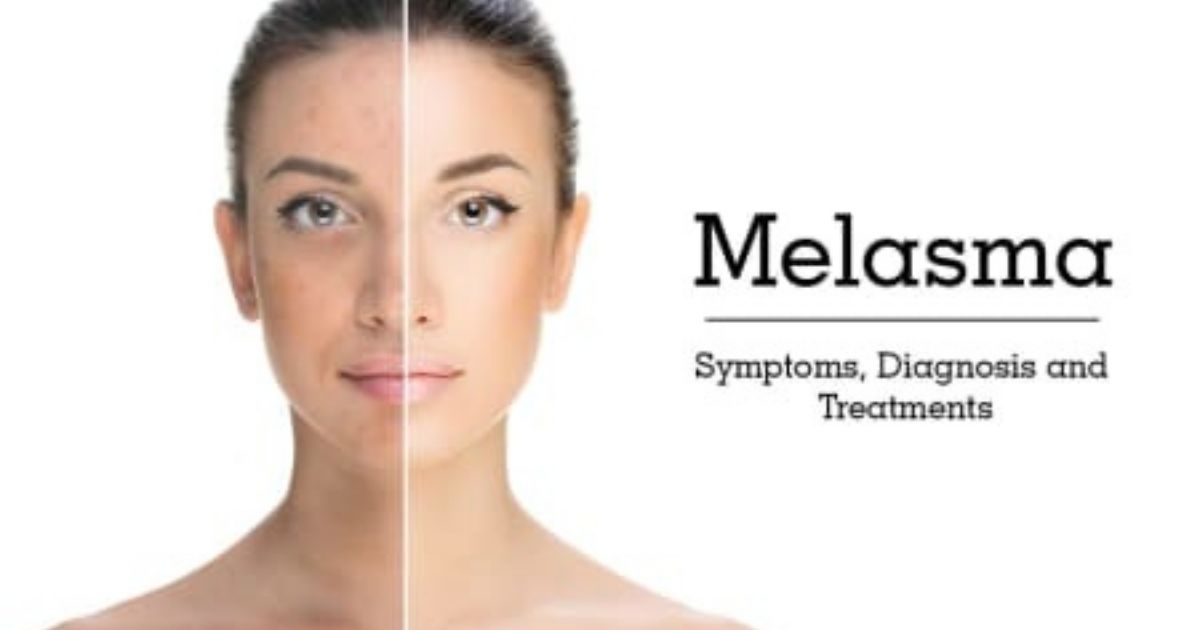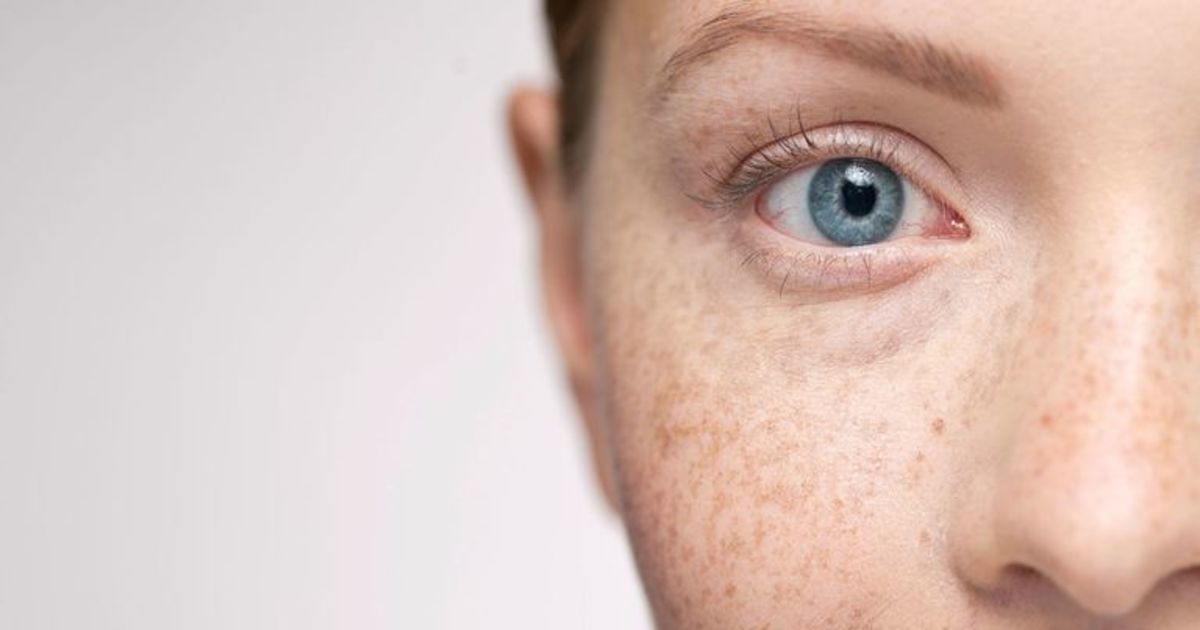Darker skin tones appear so because of the high melanin (pigment) concentration in the skin. This is actually good, as it helps protect the body from UV radiation. In turn, it shields the cells from damage that may lead to skin cancer.
While there are many benefits to having skin of color, it has one downside: it’s more prone to develop melasma.
What is Melasma?
Melasma is a common skin condition that causes brown to grayish-brown areas on the skin. It commonly affects the face and other sun-exposed areas of the skin.
Melasma is usually attributed to UV exposure and hormonal changes in the body, though it can result from genetics, skincare use, thyroid problems, and Vitamin deficiencies as well.
Common Melasma Patterns
Melasma affects the face in three patterns. The first is centrofacial, which covers the forehead, nose, and upper lip. It occurs in approximately 50-80% of all cases.
The second is malar, which is commonly seen on the cheeks.
Last is the mandibular pattern, which is commonly seen on the chin and jawline. This melasma often affects older individuals and is said to be associated with more severe sun damage.
Apart from the face, melasma affects other parts of the body as well. Known as non-facial melasma, these patches are often seen on the neck, the breastbone, arms, and upper extremities.
Prevalence
Melasma is more common in women, usually of reproductive age (20 to 40 years old), occurring at a 9:1 ratio.
According to a study, it usually affects those with Fitzpatrick skin types IV to VI. For reference:
- Fitzpatrick skin type IV: olive or light brown skin color
- Fitzpatrick skin type V: dark brown skin color
- Fitzpatrick skin type VI: deeply pigmented dark brown shade
As such, in the US, melasma is greatly seen in Asian, Latino, Arab-American, and African-American communities. Research shows that:
- It affects approximately five to six million Americans.
- It occurs in 8.2% of 1000 Latin-American patients.
- In Texas, the prevalence rate among Latinos was higher at 8.8%.
- Prevalence was 13.4 to 15.5% in Michigan-based Arab-Americans.
Due to these sheer numbers, hyperpigmentation disorders such as melasma become the third most common skin disorder in the United States.
As for the rest of the world, melasma is said to occur at the following prevalence rates:
- A high number of cases were reported in certain ethnicities, including that of Koreans, Japanese, Chinese, Indians, Pakistanis, Middle Easterners, and Mediterranean-Africans.
- In Southeast Asia, melasma occurs in approximately 40% of women.
- In India, melasma occurs with a female to male ratio of 4:1. The rate is higher in rural settings (40%) compared to urban areas (4-10%). The prevalence in pregnant women is 50%.
- In an Iranian study, 39.5% of participants were diagnosed with melasma. 9.5% of these were pregnant women.
- In Brazil, the gender ratio is a whopping 39:1 in favor of women. The prevalence rate ranges from 5.9 to 9.1%, depending on location.
- In Saudi Arabia, melasma occurs in 2.9% of 3,298 patients.
- In Ethiopia, the prevalence rate was 1.5%.
Apart from skin color, tropical locations and high-altitude areas can contribute to melasma occurrence. This explains the many affected individuals living in tropical regions (i.e. Brazilians and other Hispanics) and elevated areas (i.e. Chileans living in the Andes mountains).
Melasma in Men
While melasma is commonly seen in women, it occurs in men as well. Statistics show that:
- In Southeast Asia, melasma affects about 20% of surveyed men.
- In Puerto Rico, melasma was seen in 10% of male subjects.
Research shows that it commonly occurs in Indian and Latino men as well. This is attributed to their outdoor (sun-exposed) line of work.
Prevention
Prevention is always better than cure. If you have a skin type that is prone to melasma, then you need to remember these preventative tips:
- Wear sunscreen
When it comes to melasma, dermatologists are unanimous about this: sunscreen should be worn at all times. That means you should wear it even though it’s raining or snowing outside. Remember, sunlight can pass through the windows.
For best results, choose a sunscreen with broad-spectrum protection. Opt for a product with an SPF of 30 or higher, bearing ingredients such as zinc oxide or titanium dioxide.
According to the American Academy of Dermatologists (AAD), sunscreen should be worn at least 15 minutes before you go outside. Re-application should be done every 2 hours.
- Protect yourself from sun exposure
While wearing sunscreen is more than helpful, it’s best to have an added layer of protection whenever you go out. You can do so by wearing a wide-brimmed hat, long-sleeved shirts, and pants outside. If the hot temperatures make this impossible, make it a point to stay in the shade as often as possible.
- Be gentle on your skin
Avoid strong, abrasive skincare products or cosmetics. These can irritate your skin and worsen your melasma symptoms. As such, you need to use ‘gentler’ products on your skin.
Melasma Treatments for Skin of Color
Because of the differences in skin types, the effectiveness of the following treatments may vary accordingly. In general, here are the recommended melasma solutions for people with skin of color:
- Brightening Creams and Light Fruit Acid Peels
As for darker skin tones, Dr. S. Manjula Jegasothy recommends the aforementioned treatments. According to his interview with Essence, these are markedly safer for use in darker skin patients.
For one, a study revealed that 0.1% topical tretinoin is ideal for black participants. Results show that it can bring about a 32% improvement – with only mild side effects.
Should you decide to go for an over-the-counter brightening cream, you need to check the label carefully. According to the AAD, you should avoid products made with either steroids or mercury. These can cause pimples, rashes, and thinner skin in the long run. To make matters worse, they can lead to severe skin discoloration.
- Mild Laser Treatments
As per Dr. Jegasothy, treatments such as Fraxel or Nd:YAG may be more effective in people with lighter skin tones. This is “because they are less likely to develop hyperpigmentation.”
Results?
Even if you have eliminated the causative factor (pills, for example), know that it takes quite some time for melasma marks to fade. According to the AAD, this can occur in roughly 6 to 12 months.
In cases where pigmentation is gray, slate blue, or sometimes brown, this means that pigmentation has gone deep within the skin. The natural fading process will take several years, but you can speed it up with the help of the treatments above.
Those with darker skin tones may be at the losing end of melasma, but it is not a hopeless cause. With the help of the prevention measures and treatments above, you may have the clear, beautiful skin you have always wanted.

 Add to favorites
Add to favorites 




Be the first to comment